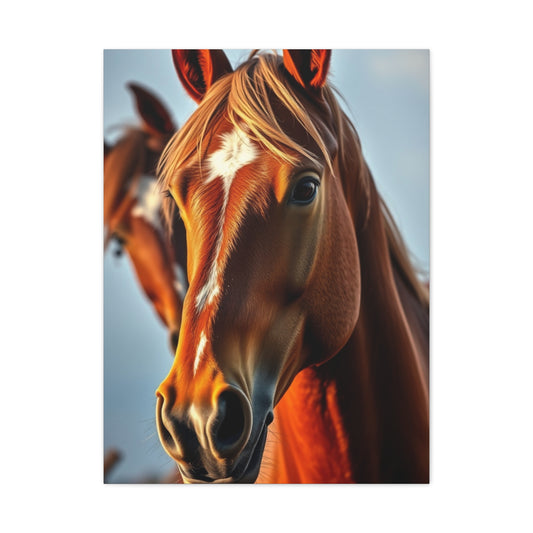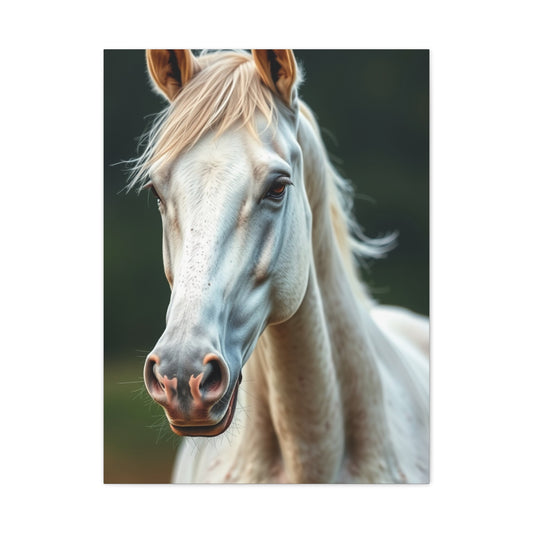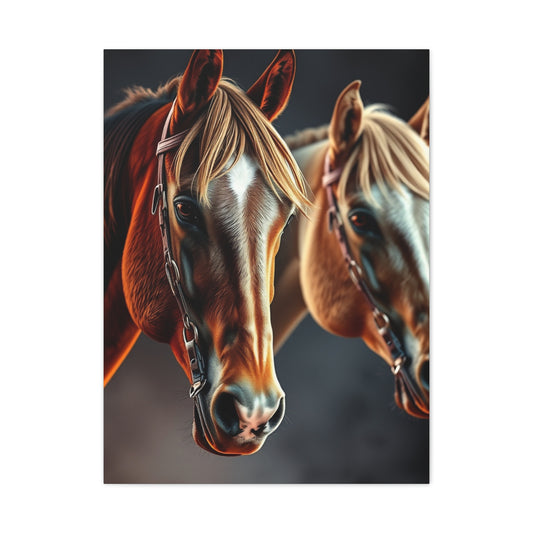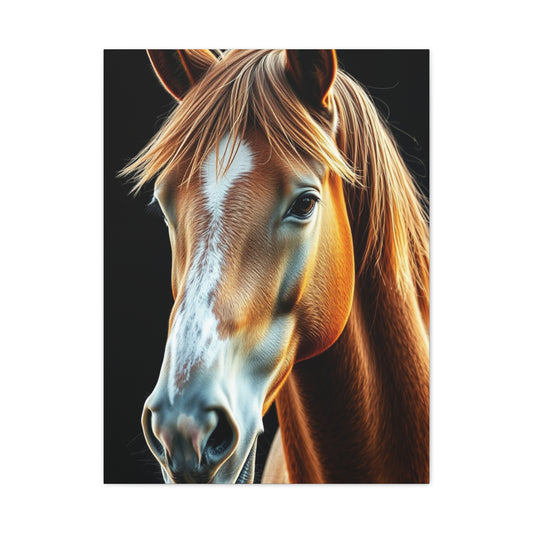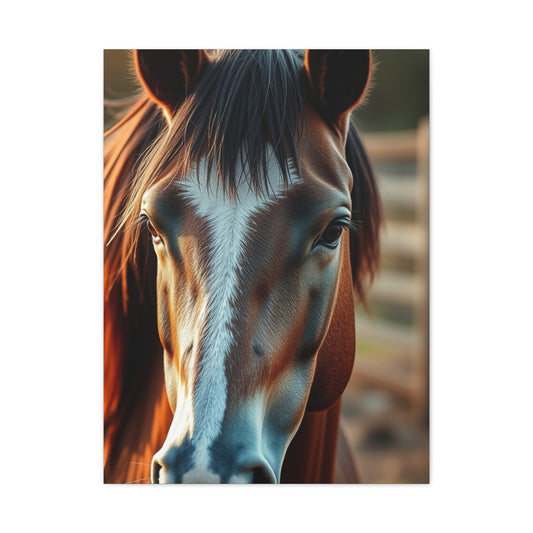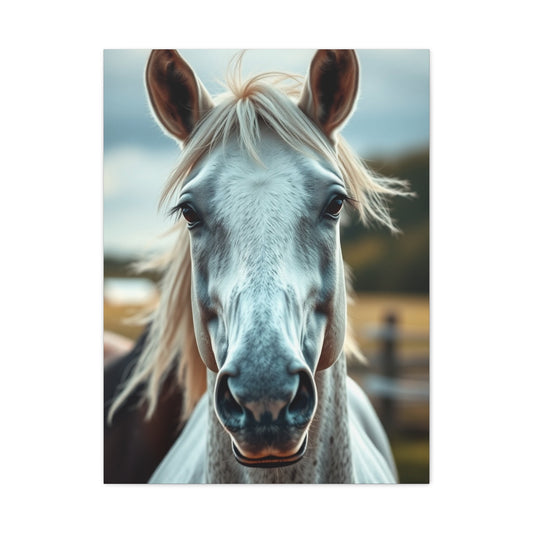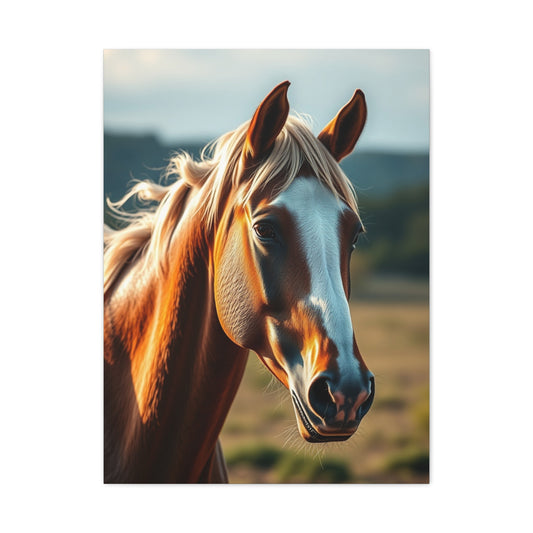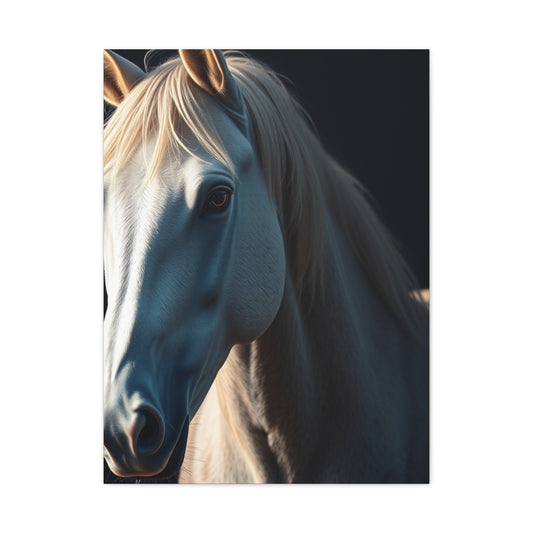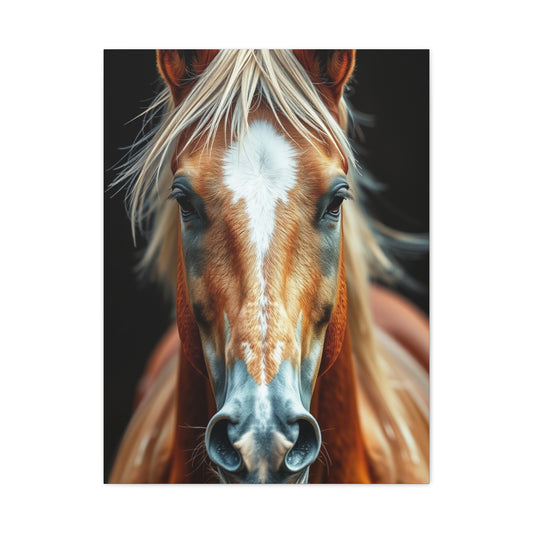-
Gallant Equine Reverie Wall Art & Canvas Print
Regular price From $141.23 USDRegular priceUnit price per -
Aristocratic Equus Artistry Wall Art & Canvas Print
Regular price From $141.23 USDRegular priceUnit price per -
Sovereign Horse Tableau Wall Art & Canvas Print
Regular price From $141.23 USDRegular priceUnit price per -
Noble Steed Portraiture Wall Art & Canvas Print
Regular price From $141.23 USDRegular priceUnit price per -
Celestial Cavalry Canvas Wall Art & Canvas Print
Regular price From $141.23 USDRegular priceUnit price per -
Imperial Equus Expression Wall Art & Canvas Print
Regular price From $141.23 USDRegular priceUnit price per -
Majestic Stallion Masterpiece Wall Art & Canvas Print
Regular price From $141.23 USDRegular priceUnit price per -
Grandiose Equine Panorama Wall Art & Canvas Print
Regular price From $141.23 USDRegular priceUnit price per -
Regal Mustang Imagery Wall Art & Canvas Print
Regular price From $141.23 USDRegular priceUnit price per -
Equestrian Elegance Canvas Wall Art & Canvas Print
Regular price From $141.23 USDRegular priceUnit price per
Creating Atmosphere and Depth through Horse Wall Art
Throughout history, horses have held a distinguished place in human imagination. They have been revered as creatures embodying elegance, vitality, and liberty. From ancient cave paintings to modern interior décor, the image of the horse continues to captivate. When translated into art adorning the walls of a home, the equine figure does more than fill space. It conveys meaning, evokes emotion, and reflects the character of those who dwell there.
Incorporating equestrian themes into one’s living environment is not a passing trend. Rather, it is a tradition steeped in centuries of appreciation for the horse’s majesty. As decorative choices evolve, horse art remains timeless, capable of blending into varied design approaches while maintaining its distinct allure.
An Atmosphere of Tranquility and Strength
A dwelling decorated with equine imagery often radiates an unusual combination of serenity and vigor. Unlike ornamental patterns or abstract shapes, horse depictions carry a narrative quality. A galloping steed, rendered in brushstrokes or photographic detail, conveys movement and dynamism. Meanwhile, a resting or grazing horse evokes calmness and repose.
This duality enriches an interior. It allows a room to feel alive without overwhelming its visitors. People drawn to horse racing wall art, for instance, often describe a feeling of energy balanced with refinement. Such works enliven the surroundings while maintaining composure.
Aesthetic Versatility in Design
One of the most remarkable aspects of equine wall art is its ability to merge with numerous interior styles. A minimalist setting gains a focal point through a single monochromatic photograph. A rustic farmhouse atmosphere is enhanced by wooden carvings or weathered signs carrying equestrian motifs. Even highly contemporary homes, with sleek lines and metallic accents, benefit from the integration of equine sculptures in steel or bronze.
The adaptability of horse imagery lies in its universal symbolism. Grace and power resonate across cultures, enabling the theme to flourish in eclectic or highly specific design schemes. What changes is not the subject itself but the medium, color palette, and form through which it is expressed.
Forms of Expression in Horse Wall Art
The breadth of equestrian wall décor spans multiple media, each carrying its own resonance.
Paintings and Fine Art
Paintings have long been the traditional vessel for equine imagery. Artists often focus on anatomy, musculature, and motion, creating compositions that capture the animal’s essence. Expansive canvases may dominate a wall, commanding attention and sparking conversation. Smaller framed works, carefully curated, can create a gallery-like effect, giving a room an air of cultivated taste.
Photography
Photographs provide immediacy and authenticity. Black-and-white images highlight texture and form, revealing the majesty of mane, eyes, and stance without distraction. Conversely, full-color depictions capture the vibrancy of fields, tracks, and sunsets behind the horses. For those passionate about equestrian sport, horse racing wall art in photographic form offers a vivid sense of the action, hooves blurred in motion and jockeys leaning into the moment of speed.
Wooden Carvings and Signs
Rustic homes often benefit from wooden features. Carved or painted wood bearing silhouettes of horses or short phrases tied to equestrian life introduces warmth. These tactile elements stand apart from flat images, offering depth and a handcrafted aesthetic. The natural grain of wood pairs harmoniously with the organic beauty of the horse itself.
Metal Works
Sculptural metal wall pieces convey a modern sensibility. Polished surfaces reflect light, turning the horse figure into a dynamic part of the room’s atmosphere. More antiquated iron or bronze pieces carry a sense of endurance and history. The tension between hard material and living subject results in a fascinating dialogue within the space.
Placement within the Home
Selecting where to place horse-inspired wall art is as significant as choosing the piece itself. The placement determines not only visibility but also the mood imparted to the room.
In a living room, a grand painting or photograph above the sofa sets a commanding tone. It becomes a point of convergence for gatherings, anchoring the room’s composition. In dining spaces, smaller prints or carvings may encourage conversation without overwhelming the table’s intimacy.
Workspaces benefit from motivational imagery. A racing horse can act as a metaphor for perseverance and ambition, subtly reinforcing focus. Children’s rooms, meanwhile, thrive on whimsical horse illustrations that cultivate imagination and affection for animals.
Even hallways, often neglected in design, can become more engaging with equestrian art. A sequence of smaller prints along a corridor guides movement, echoing the horse’s own sense of journey and momentum.
The Influence of Scale and Proportion
Art is not merely decoration but architecture’s companion. Choosing the right scale ensures that the piece harmonizes with surrounding furniture and architecture. Oversized canvases draw the eye and establish authority, best suited for open walls unimpeded by shelves or fixtures. Smaller works are perfect for layering, creating clusters that invite closer inspection.
Horse racing wall art, often filled with action, benefits from larger scales that allow viewers to appreciate detail and movement. However, intimate sketches or studies of equine forms may be best appreciated in smaller frames where one can approach closely, savoring the fine line work and subtleties.
Crafting a Personal Narrative
Equestrian wall art transcends mere ornamentation when it aligns with personal meaning. For some, it recalls childhood experiences of riding across fields. For others, it represents a passion for competition, whether in polo, show jumping, or racing. Displaying such imagery becomes autobiographical, telling a story through the environment of the home.
The choice of subject and medium reflects identity. A lover of traditional oil paintings might select a pastoral scene with horses grazing under trees, while a devotee of speed may favor horse racing wall art filled with motion and intensity. Each selection contributes to a mosaic of self-expression that words alone cannot capture.
DIY Approaches to Horse-Themed Decor
For those who relish creating their own environment, crafting equine decorations by hand provides immense satisfaction. Hand-painting silhouettes, repurposing wood into engraved plaques, or designing stenciled motifs on canvas are popular methods. These homemade elements enrich a space not only aesthetically but emotionally, for they embody effort, time, and creativity.
Even photography enthusiasts may embark on capturing their own horse images, whether at local stables, fields, or race tracks. Personal photographs, enlarged and framed, carry the authenticity of direct experience and deepen the emotional resonance of the décor.
Cultural Depth of Equine Imagery
Horses are not merely animals of utility or sport; they are cultural emblems woven into mythology, literature, and folklore. From the winged Pegasus of Greek legend to the revered warhorses of medieval Europe, their representations have always symbolized more than physical presence. Incorporating horse imagery into domestic spaces connects a home with these wider cultural narratives, enriching the dwelling with layers of significance.
Equestrian wall art thus operates on multiple levels: as visual beauty, as personal story, and as cultural inheritance. It allows homeowners to participate in a continuum of admiration that stretches back through millennia.
The allure of horse-inspired wall art lies not in fleeting fashion but in enduring symbolism, versatility, and emotional depth. Whether through paintings, photography, woodcraft, or metal sculpture, these works imbue spaces with both tranquility and dynamism. Properly chosen and thoughtfully placed, they serve as more than decoration; they are extensions of identity and reflections of humanity’s timeless bond with the horse.
The Infinite Language of Artistic Mediums
Art centered on horses has never been confined to one expression. Throughout history, artisans and creators have sought different ways to portray the majesty of the animal. Each medium alters the perception of the horse, casting it in moods ranging from solemn tranquility to vigorous dynamism. Within the domestic sphere, selecting the right form of equestrian wall décor allows homeowners to shape not only aesthetics but also the emotional register of a room.
The beauty of such art lies in its multiplicity. From elaborate brushwork to industrial sculpture, equine imagery adapts seamlessly to contrasting tastes. The choice of medium becomes a dialogue between tradition and innovation, personal memory and artistic experimentation.
Classical Paintings of Equine Majesty
Oil paintings have served as vessels for equestrian imagery since antiquity. Within large-scale canvases, horses are rendered with anatomical precision, their musculature stretched mid-gallop or poised in dignified stillness. The brush imbues each figure with life, layering pigment until the subject breathes from the surface.
Some works embrace pastoral calm, depicting horses grazing in meadows under expansive skies. Others capture moments of intensity, such as battle scenes or sporting contests. The former radiates serenity, while the latter brims with vitality and movement. Hanging such paintings in a room conveys refinement, suggesting both cultural awareness and admiration for one of humanity’s oldest companions.
The Photographic Eye
Modern photography introduced a revolution in the way equestrian art is perceived. Unlike paintings, which rely on interpretation, photography delivers immediacy. The camera captures minute details — the tension of a tendon, the ripple of a mane in the wind, the glint of alert eyes.
Black-and-white photographs emphasize form and contrast, abstracting the horse into a near-sculptural subject. By stripping away color, such images distill the essence of structure and light. Conversely, richly colored photographs highlight the vibrancy of the animal in its environment. Fields of green, earthy tracks, or glowing sunsets heighten the sense of vitality.
For enthusiasts of competition, horse racing wall art in photographic form is particularly captivating. A frozen moment of hooves leaving the ground, dirt flying from the track, and jockeys leaning into speed communicates more than mere sport — it conveys the pulse of ambition, rivalry, and triumph.
Wooden Interpretations
Wood, with its organic grain and earthy warmth, offers a rustic dimension to equestrian décor. Carved silhouettes, engraved signs, and painted panels bring the spirit of the countryside indoors. In farmhouses or cabins, these wooden pieces resonate with authenticity, recalling stables, barns, and open pastures.
The tactile surface of wood adds character unavailable in flat prints. Time-worn edges or deliberately distressed finishes tell their own story, suggesting age and continuity. Incorporating wooden art fosters intimacy in a home, a reminder of the tactile world outside modern materials.
Metal as a Modern Medium
Metalwork transforms the equine figure into something enduring and contemporary. Whether steel, bronze, or iron, the medium bestows weight and permanence. Polished surfaces catch light and change throughout the day, making the piece appear alive as it interacts with shifting shadows.
Sleek geometric designs in stainless steel suit modern interiors, while aged bronze or wrought iron blends with classical or rustic motifs. Mounted against plain walls, these sculptures introduce dimensionality and presence. Unlike paintings or prints, they alter space physically, asserting themselves as both art and structure.
Murals and Large-Scale Impressions
Beyond framed works or sculptural pieces, entire walls may become canvases. Murals depicting equestrian themes transform a room into an immersive environment. These vast images are not simply decorations; they are atmospheres in themselves. A wall adorned with a galloping herd expands the sense of space, giving the impression of boundless movement.
For children’s rooms, playful murals can inspire imagination and joy. For living areas, sophisticated designs elevate the room into a unique sanctuary where guests immediately encounter the homeowner’s artistic narrative.
Tapestries and Textile Expressions
Textiles offer yet another avenue for equestrian themes. Woven tapestries featuring horses have adorned castles and estates for centuries, their intricate patterns telling stories of hunts, journeys, or pastoral life. In modern contexts, equine motifs appear in fabric wall hangings or framed textiles.
The softness of the textile contrasts with the strength of the subject, producing a balance between delicacy and power. The play of fibers and dyes creates texture that engages both the eye and the sense of touch, enhancing the layered richness of interior design.
The Subtle Art of Sketches and Drawings
Sometimes restraint communicates more than extravagance. Pencil sketches, charcoal renderings, and ink drawings distill the horse to its essence. Lines curve and intersect, capturing posture, movement, and character in minimal strokes. These works embody spontaneity and intimacy, offering a glimpse into the artist’s immediate connection with the subject.
Such sketches often suit smaller spaces or personal corners of a home, where viewers can linger close and appreciate nuance. Their simplicity allows them to coexist harmoniously with more elaborate décor.
Fusion and Experimentation
Contemporary artists often experiment by blending mediums. Mixed-media pieces combine paint, fabric, and found objects to create layered interpretations of the horse. Digital art introduces surreal compositions, bending form and color in imaginative ways. These experimental works challenge traditional depictions, offering homeowners a chance to showcase originality and daring.
Even within such innovation, the essential presence of the horse remains intact. Its silhouette, energy, and symbolism continue to guide the artist’s hand, ensuring recognition despite abstraction.
Emotional Resonance of Medium Choice
The selection of medium is not purely aesthetic. Each carries emotional undertones that influence how the viewer experiences the work. Paintings may feel cultivated and traditional. Photographs exude immediacy and vitality. Wooden carvings resonate with warmth and nostalgia. Metal sculptures speak of permanence and strength. Murals envelop viewers in an immersive atmosphere, while sketches invite quiet contemplation.
Horse racing wall art exemplifies this interplay. Rendered in paint, it dramatizes speed and rivalry. Captured in photography, it freezes the thrill of competition. Sculpted in metal, it immortalizes motion in enduring material. Each medium changes not only the representation but the emotional response it evokes.
Cultivating Coherence in Interior Design
While individual pieces may dazzle, coherence ensures a room’s overall success. Selecting artworks that complement each other in tone and medium prevents visual dissonance. A home may combine a large photographic centerpiece with smaller wooden carvings, uniting rustic warmth with vivid realism. Alternatively, a modern dwelling may favor metal sculptures paired with minimalist sketches, producing a dialogue between weight and delicacy.
The homeowner’s task is to orchestrate these elements so that the final composition resonates with harmony. The result is more than decoration — it is a visual symphony where every medium plays its part.
The world of equine wall décor encompasses a vast spectrum of forms, each carrying its own beauty and resonance. From classical paintings to contemporary sculptures, from rustic wood to vibrant photography, the horse emerges again and again as a subject of inexhaustible fascination. Choosing the right medium transforms not only the art itself but the entire atmosphere of a home, allowing the presence of the horse to enrich daily life with grace, vitality, and enduring charm.
The Power of Placement
Art is not only about the subject or medium; it is also about where it resides. The placement of equestrian wall art determines its visibility, its interaction with light, and its influence on mood. A piece positioned above a sofa becomes the anchor of a living room. A series of prints along a hallway transforms a transitional space into a visual journey. A single sketch placed in a quiet nook becomes a private meditation.
Understanding how to integrate horse-themed artwork into various rooms is essential for cultivating balance. It is not merely about decoration, but about orchestrating atmosphere.
Living Rooms as Stages of Expression
The living room is often the central gathering place in a home, making it the ideal setting for commanding equine imagery. Large canvases or expansive photographs of horses create a sense of grandeur. A galloping herd rendered across a wide canvas can bring vitality to the room, while a portrait of a single noble horse introduces dignity and calm.
Arrangements of smaller works offer an alternative. A gallery wall composed of diverse equestrian depictions — paintings, sketches, photographs — creates rhythm and narrative. Visitors encounter not a single scene, but a collection of impressions, each contributing to the whole. Horse racing wall art can also be a striking choice here, adding dynamism and energy to a space meant for social interaction.
Dining Areas and Subtle Enrichment
In dining rooms, art must be carefully measured so as not to overwhelm conversation or intimacy. Medium-sized prints or understated wooden carvings suit these spaces well. They provide visual enrichment without monopolizing attention.
Images of horses at rest or in pastoral settings complement the ritual of shared meals, infusing the room with tranquility. Alternatively, a single dramatic piece on one wall can establish a tone of sophistication while leaving other walls free to maintain simplicity.
Bedrooms as Personal Sanctuaries
Bedrooms are spaces of retreat, and horse-inspired art can enhance their serenity. Calming imagery — grazing horses, pastoral fields, or monochrome sketches — harmonizes with the atmosphere of rest. Hung above the bed, a balanced composition acts as both a focal point and a protective presence.
For individuals who find energy in dynamism, more active imagery, such as horse racing wall art, may serve as a reminder of ambition and vitality. In such cases, careful use of color and scale ensures that the energy of the piece enriches rather than disrupts the restful quality of the space.
Workspaces and Sources of Motivation
In home offices or studios, equestrian wall art becomes a source of inspiration. Horses have long been symbols of perseverance and momentum, and their images can reinforce productivity and focus. A dynamic painting of horses in motion mirrors the drive of daily tasks, while framed quotes accompanied by equine motifs remind the mind of resilience and strength.
Horse racing wall art, particularly photographs capturing split-second action, can embody ambition and determination. Such imagery fuels motivation, subtly guiding work ethic through visual metaphor.
Children’s Rooms and Whimsical Wonder
For children, equine imagery can nurture imagination and affection for animals. Playful illustrations, colorful prints, or murals of horses in meadows introduce joy and narrative into their environment. The figure of the horse becomes both companion and muse, fostering creativity.
The choice of medium in these rooms often leans toward the whimsical: cartoon-like drawings, pastel-colored prints, or even textiles such as fabric wall hangings. These pieces are approachable, friendly, and comforting.
Hallways as Transitional Galleries
Hallways often remain neglected in interior design, yet they offer unique opportunities for equestrian themes. A linear arrangement of smaller works guides movement along the passage, echoing the forward momentum of horses themselves.
Sequences of racing photographs, sketches of galloping forms, or even minimalist silhouettes can turn a plain corridor into an immersive journey. In this context, horse racing wall art resonates especially well, its inherent sense of progression mirroring the movement of people through the space.
The Interplay of Light and Space
Placement cannot be separated from light. Natural sunlight, filtered through curtains, may enhance the warmth of wooden carvings or highlight the sheen of metallic sculptures. Artificial lighting, whether spotlights or diffused lamps, can be used to emphasize focal pieces, drawing the eye to equine imagery as though it were a centerpiece in a gallery.
Care must also be taken to avoid excessive glare on glass-framed works, particularly with photography. The horse’s presence should feel vivid and alive, not diminished by reflective interference.
Balance with Furniture and Architecture
The integration of art also depends on how it interacts with existing furniture. Oversized works demand uncluttered walls and minimal competition from surrounding objects. Smaller pieces thrive when paired with complementary furniture — for instance, a modest drawing above a writing desk, or a carved wooden panel above a side table.
Architecture, too, shapes the effect. Tall ceilings invite large vertical compositions, while horizontal stretches of wall call for elongated works. Matching the artwork to the scale of the room ensures coherence, preventing either underwhelming or overwhelming results.
Emotional Resonance of Room Placement
Each room of the home carries its own emotional tone, and the placement of equine wall art amplifies or modifies that tone. The living room becomes dynamic and welcoming, the dining area tranquil, the bedroom restful, the workspace motivating, the child’s room imaginative, and the hallway purposeful.
Horse racing wall art, depending on placement, may evoke exhilaration in social spaces, determination in workspaces, or continuity in transitional areas. Pastoral scenes, meanwhile, soften bedrooms and dining rooms with calmness. The art becomes not just ornament, but emotional architecture.
Cultural Memory within Domestic Spaces
The integration of equestrian themes into different rooms also carries cultural echoes. Historically, great houses often displayed equine portraits in central chambers, testifying to status and connection to land. Stables were themselves decorated, affirming the reverence held for the animal. In modern homes, these traditions persist in altered form, transforming from grand oil portraits to more intimate, personalized interpretations.
Placing horse art within a home thus aligns the present with a lineage of appreciation reaching back centuries. Each room, through its artwork, participates in this continuum.
Integrating horse-themed wall art into different areas of the home transforms spaces into environments rich with narrative and emotion. Placement, scale, light, and architectural context all contribute to how the equine figure is perceived. Whether in the form of serene pastoral images, dynamic horse racing wall art, rustic carvings, or contemporary sculptures, these works adapt fluidly to living rooms, dining areas, bedrooms, workspaces, children’s rooms, and hallways. The result is a dwelling that resonates with vitality, tranquility, and timeless symbolism.
The Allure of Handmade Creations
Equestrian wall art need not always come from galleries or professional studios. Many find profound joy in crafting their own horse-themed pieces, weaving personal creativity into a timeless subject. Handmade décor carries a unique resonance: it reflects both admiration for the horse and the individuality of the creator. Unlike mass-produced works, each handmade piece becomes a one-of-a-kind treasure, infused with sentiment and story.
Creating equine artwork at home also nurtures a deeper relationship with the theme. The act of sketching, painting, carving, or assembling requires attentiveness to the animal’s form and spirit. This intimacy results in works that, even if imperfect, radiate authenticity.
Painting and Sketching at Home
For those inclined toward traditional art, painting and sketching horses offer a rewarding path. Watercolors capture delicacy, allowing subtle washes to depict movement and atmosphere. Acrylics provide boldness, layering vibrant colors that bring energy to a canvas. Graphite or charcoal sketches emphasize form and texture, distilling the horse into lines and shadows.
Amateurs need not fear technical limitations. Even simple silhouettes, executed with care, convey the essence of the horse. A handmade sketch framed on a wall carries as much emotional weight as a polished professional print, for it embodies personal effort. Horse racing wall art, in particular, offers engaging challenges for artists — attempting to capture motion, speed, and intensity sharpens technique while producing works full of vitality.
Crafting with Wood
Woodworking introduces a tactile dimension to horse-themed décor. Simple projects may include cutting equine silhouettes from planks, staining them for a rustic effect, or engraving motifs with wood-burning tools. More advanced artisans may attempt relief carvings, bringing depth and shadow into play.
The organic quality of wood harmonizes with equestrian imagery, echoing stables, barns, and open landscapes. Handmade wooden art hung in a living room or hallway carries warmth and authenticity, speaking of patience and craftsmanship.
Textile Expressions
Fabric provides another avenue for creativity. Stenciling horse shapes onto canvas, embroidering equestrian motifs onto wall hangings, or assembling patchwork quilts featuring equine imagery all transform soft materials into art. The result is tactile, approachable, and versatile, suitable for bedrooms or children’s spaces.
Textile-based horse racing wall art, though less common, can be striking — stitched banners depicting racing silhouettes or appliqué designs capturing the blur of competition add a distinctive dimension.
Metalwork and Modern Crafting
For those drawn to industrial materials, metal offers opportunities to experiment with equine forms. Plasma-cut steel silhouettes, welded sculptures, or hammered copper panels introduce durability and modernity. These pieces may require specialized tools, but they reward the effort with striking results.
Home artisans sometimes repurpose discarded materials — turning old tools, bicycle chains, or sheet metal into equine figures. Such works not only decorate but also embody sustainability, transforming remnants into meaningful art.
Photography as Personal Creation
Photography allows individuals to create equestrian art directly from lived experience. A visit to stables, a countryside pasture, or a racetrack provides countless opportunities to capture horses in varied moods. Enlarging and framing these images personalizes décor, transforming memories into permanent fixtures of the home.
The immediacy of photography makes it an accessible medium. Smartphones now rival professional cameras in capability, enabling enthusiasts to experiment with angles, lighting, and composition. A personal photograph of horse racing wall art, framed elegantly, carries emotional resonance far surpassing generic prints.
Digital Approaches and Innovation
Technology opens new pathways for equestrian creativity. Digital illustration software enables artists to experiment with surreal compositions, merging horses with abstract landscapes or futuristic designs. Printing these works on canvas, acrylic, or fabric transforms digital imagination into tangible wall art.
Photo-editing tools also allow manipulation of personal images, creating stylized versions that emphasize speed, color, or dramatic contrast. A horse captured at a racetrack might be transformed into a vivid, almost painterly vision of motion, suitable for display as unique horse racing wall art.
Crafting as a Family Tradition
Equestrian DIY projects need not be solitary endeavors. Families can collaborate, involving children in painting, cutting, or assembling horse-themed decorations. The process fosters bonding while creating keepsakes that endure. A child’s drawing of a horse, framed with care, may hold more sentimental value than any gallery purchase.
Such projects also instill appreciation for craftsmanship and animals, connecting generations through shared creativity. Over time, these handmade pieces become heirlooms, reminders of both family and the enduring beauty of horses.
Imperfection as Charm
Handmade works often bear imperfections: uneven lines, asymmetrical shapes, or visible brushstrokes. Far from diminishing value, these traits often enhance authenticity. They remind viewers of the human hand behind the piece, of the hours of labor and intent invested.
In contrast to flawless factory reproductions, handmade equine décor embodies sincerity. A slightly rough wooden carving or an unpolished sketch may, in its rawness, capture the horse’s vitality more vividly than perfection ever could.
Cultural Echoes in Craft
Crafting equestrian art also connects to deep traditions. Across cultures, horses have long been carved into wood, painted onto pottery, or woven into textiles. To create one’s own horse-themed work is to participate in a continuum of human expression stretching back thousands of years.
The domestic act of making becomes a cultural ritual, linking the present moment with ancestral practices. Whether crafting rustic carvings or modern digital pieces, the creator joins this lineage, reaffirming humanity’s enduring bond with the horse.
Horses as Archetypes Across Time
From the earliest civilizations, horses have been portrayed not merely as animals but as archetypes of power, beauty, and transcendence. Ancient cave painters traced their forms on stone walls, suggesting reverence for their strength and grace. In Greek mythology, the winged Pegasus symbolized divine inspiration, while in Celtic traditions, horses were linked to fertility and sovereignty. Across Asia, equine figures adorned scrolls and manuscripts, often embodying loyalty and endurance.
These associations continue to influence modern sensibilities. When equestrian imagery appears in the home, it echoes these ancient narratives, lending depth to what might otherwise seem like mere decoration. A painting or photograph on a wall carries not only aesthetic appeal but millennia of symbolic resonance.
The Horse as a Symbol of Freedom
Perhaps the most universal quality associated with horses is freedom. Their gallop embodies unrestrained motion, unbound by fences or limits. Within wall art, this quality becomes palpable. A photograph of a horse racing across a track conveys exhilaration, while a sketch of a horse roaming open pastures offers tranquility coupled with boundless possibility.
Displaying horse imagery in domestic spaces reinforces this symbolism. It suggests a household that values liberty, movement, and aspiration. Horse racing wall art, in particular, embodies the exhilaration of speed and the pursuit of achievement, becoming a metaphor for ambition in daily life.
Power, Strength, and Resilience
Beyond freedom, horses are emblems of strength and resilience. In war, in agriculture, and in sport, they have long been companions in humanity’s most strenuous endeavors. Their musculature, often highlighted in art, signifies endurance. Their alert stance, ears forward and eyes sharp, symbolizes readiness and vigilance.
Incorporating such imagery within a home communicates a quiet yet potent message: a reminder of resilience in the face of challenge, a celebration of stamina and fortitude. A piece depicting a racing horse, for example, may stand not only as a visual thrill but also as a daily affirmation of perseverance.
Tranquility and Pastoral Calm
Contrasting the horse’s vigor is its capacity to embody tranquility. Horses grazing in fields or standing in quiet repose often evoke feelings of pastoral serenity. Artists and photographers who capture these moments provide viewers with a sense of stillness, reminding them of nature’s slower rhythms.
When displayed in bedrooms, dining rooms, or meditation spaces, such works cultivate calmness. They act as visual sanctuaries within domestic life, counterbalancing the hurried pace of the outside world.
The Horse in Folklore and Storytelling
Every culture has stories where horses play essential roles. In Norse mythology, Odin rode Sleipnir, an eight-legged steed symbolizing transcendence between worlds. In Indian epics, horses carried heroes into battle, representing both loyalty and courage. In Native American traditions, horses became symbols of wealth, freedom, and sacred connection.
Equestrian wall art thus carries echoes of storytelling traditions. Even when abstracted into modern forms, these cultural layers persist. A viewer unconsciously perceives the horse not only as an animal but as a figure saturated with myth and legend.
Horse Racing as a Cultural Phenomenon
Among equestrian traditions, horse racing holds a singular place. More than sport, it has been ritual, celebration, and spectacle for centuries. From the hippodromes of ancient Greece to the racetracks of modern cities, the image of horses in competition reflects both human ambition and the enduring bond between rider and steed.
Horse racing wall art channels this heritage. Photographs of horses in mid-stride, paintings of jockeys leaning forward, or abstract representations of speed and motion all draw upon the cultural drama of the race. For enthusiasts, these works commemorate not only the thrill of competition but also its historical continuity.
The Universal Language of Movement
Art featuring horses often emphasizes movement — galloping, leaping, straining against reins. This visual language transcends cultural boundaries. Motion becomes metaphor: for progress, for time passing, for striving toward a goal. A single piece of wall art can embody momentum, suggesting that life itself is a journey always advancing.
In a living space, such imagery energizes the environment. It encourages viewers to embrace forward motion in their own lives, to perceive challenges not as obstacles but as paths to greater horizons.
Modern Interpretations of Symbolism
Contemporary artists reinterpret traditional equestrian symbolism in inventive ways. Some portray horses with surreal colors, transforming them into dreamlike visions of creativity. Others strip away detail, reducing the animal to minimalist outlines, emphasizing form over narrative.
Even within abstraction, the essential qualities endure. Freedom, power, resilience, and grace continue to shine through, reminding viewers that the horse’s symbolism is not confined to realism but transcends style. Horse racing wall art rendered in modernist or digital forms still conveys ambition and exhilaration, though through new visual languages.
The Psychological Impact of Equine Imagery
Psychologists often note the influence of visual stimuli on mood and thought. Horses, with their balance of vigor and calm, affect viewers in nuanced ways. A galloping herd may inspire energy and enthusiasm, while a solitary horse at rest encourages reflection.
This psychological dimension explains why equestrian wall art feels so universally appealing. It engages not only the eye but also the spirit, reminding inhabitants of qualities they wish to embody — strength, grace, freedom, or tranquility.
Conclusion
Horse wall art is far more than ornamentation; it is a dialogue between history, culture, and personal expression. Horses have long embodied freedom, resilience, and grace, and their presence on walls continues to inspire these same qualities in contemporary homes. Whether through classical paintings, vivid photography, rustic wooden carvings, or dynamic horse racing wall art, the imagery adapts to diverse styles and spaces while retaining its timeless essence. Each room, from living areas to workspaces, benefits from the symbolism and energy that equestrian themes impart. Crafted pieces and personal creations add layers of authenticity, while cultural echoes remind us of humanity’s enduring reverence for the horse. In the end, horse-inspired wall décor enriches interiors with both aesthetic sophistication and emotional resonance, transforming ordinary walls into meaningful expressions of vitality, tranquility, and aspiration. It is an art form that continues to gallop gracefully across time and imagination.

